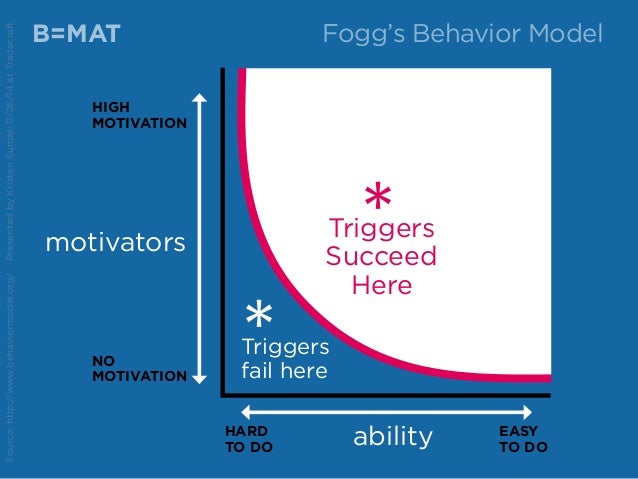Many companies come to us with an idea for a “steps challenge” to engage employees. Having worked with hundreds of companies, we’ve activated many “challenges”.
But we’ve also learned that “challenges” are often not the best framework for employee engagement. Here’s why…
Dr. BJ Fogg, head of the Behavior Design Lab at Stanford University, has a useful model to explain the conditions necessary for people to take a desired action– in this case, participating in a steps challenge.
According to Fogg, people need enough motivation to do the action, enough ability to do it, and a prompt that tells them to act.
If those three things happen at the same time, then the person will take the action.
What happens when you use a “challenge” for employee engagement?
Well, the word “challenge” means something difficult. So just saying “challenge” makes the action seem harder.
Even though most employee engagement activities aren’t really that difficult, your colleagues may think: Do I really have the time or energy for another hard thing in life right now?
Most people don’t… unless the reward is sufficiently motivating.
Unfortunately, challenges can also decrease motivation, especially when they are focused on competition.
Sure, many employees pride themselves on being competitive.
But when it comes to fitness, most companies have a few employees that run a lot. (We’re looking at you, Stephanie!) Those people might be motivated by competition because they can win. But no one else will be motivated since they know they can’t compete with Stephanie.
Finally, we need prompts telling people what to do. These prompts are usually an email or other communication.
Even if someone is motivated to participate, they won’t take action if they receive your prompt at a time when they can’t act– like in the middle of an important meeting, or when they’ve just received 20 other emails.
Therefore, it’s helpful to send several communications about your program. If someone misses or can’t act on the first one, there can be other bites at the apple.
Yet traditional “challenges” don’t provide many opportunities to send prompts. Once the challenge starts, it doesn’t make sense to send more emails inviting people to join. Latecomers will be even less inclined to participate since they’ll be behind everyone else.
So, what can you do to increase motivation, ability, and opportunities for prompts?
When you invite employees to move for charity, you can do all three– especially when you tell a simple story focused on impact, teamwork, and how easy it is for everyone to participate.
First, you increase motivation by focusing on the charity’s impact and helping others– something that most people want to do.
Second, you can emphasize how easy it is for people to contribute to that impact. You don’t have to be a marathoner or cyclist. Even just walking your dog or crossing the office can make a difference.
Finally, you can regularly celebrate how many trees you’ve planted, how many meals you’ve donated, or other team milestones. You can share personal stories or photos from people on the team, or from the charity you’re supporting.
This makes your participants feel extra good (further increasing motivation) — and it prompts colleagues who haven’t yet joined to give it a try so they don’t miss out.
Increased motivation, easier participation, and more opportunities for prompts– this is why we encourage our partners to de-emphasize challenges and, instead, lean into the charity.
Of course, every community is different. What engages your colleagues the most? Do “challenges” work for you? How else could you increase motivation, make it easier, and give more prompts?



